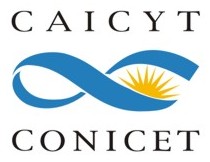Presenter: Alberto Apollaro
July 9, 2009 at 4:00 pm
Background
Alberto Apollaro is a member of the Scientific Electronic Library Online (SciELO) Argentina group and is a specialist in webspace development and applications. Mr. Apollaro joined CAICYT-CONICET in 1998 as a systems website administrator, including serving as the webmaster for CONICET’s specific website for academic publication.
Session Overview
The SciELO project’s directive is based on “the development of a model methodology for the preparation, storage, sharing and evaluation of scientific publications as an electronic support.”(1) As an alternative to print, the library facilitates international distribution of Latin American scholarship with regional impact in an organized, accessible format. This regional project stems from National Council for Scientific and Technical Research (CONICET) policy, which in turn is administered by the independent, Argentinian Centre for Scientific and Technological Information (CAICyT).

The CAICyT has charged the production a website which will allow Argentina systematically catalogue digitalized data that is editorialized and peer-reviewed as per the academic standards previously described by CONICET. Also, in part of CAICyt’s directive to push Argentinean scholarly publication into the open-access era, CONICET draws upon 15 university repositories to fuel 32 open-access e-journals. This initiative is facilitated by the use of the open-source Open Journal System (OJS) Software which allows online management of the process from submission through to publication.
The process began with journal selection from the Latindex, which contains over 2,800 titles. Editors were then invited as the website was constructed. CAICyT would provide the editors’ platform for discussion and consultation, while also providing publishers with guidelines for quality improvement . OJS allows the website to self-archive authors’ submissions and facilitate peer-reviewing and copy-editing quickly and efficiently.
The expectation is that the CONICET website will provide a repository and portal for local Argentinean scholarship, and allow publication not just limited to text but multimedia also. The streamlined editorial model allowed by OJS will hopefully encourage submission of regional scholarship and see it through to immediate publication, while operating under a more economically attractive model in comparison to traditional publication.
During the following discussion, Mr. Apollaro described the OJS is a very attractive mechanism to facilitate publication in Latin America (for the aforementioned reasons), but the problem lies in the current unfamiliarity shared amongst Argentinean scholars with OJS. This is essentially holding back the website’s growth, and progress of the Latin American open-access movement in general. Certainly, one of CONICET’s future efforts should be focusing on increasing open-access awareness in the Latin American scholarly community.
References
1) http://www.scielo.org.ar/scielo.php?script=sci_home&lng=en&nrm=iso